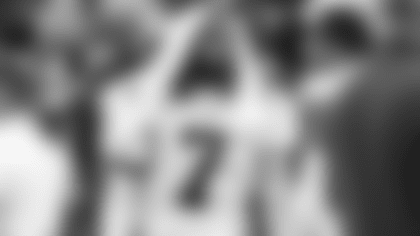Every year, I break down every Cowboys play into right around 50 different categories. I track things like motions, pass length, routes, checks, formations, blitzes and so on. Here's a small screenshot of last year's data:

To give you an idea of how large these files can grow, consider that the image above represents under three percent of the data I tracked in 2012. This database is why I'm able to say things like "The Cowboys need to run more play-action passes and counters" and have some numbers to back me up.
Last week, I published an article that used the data I've collected to argue for specific **types of plays the ’Boys should call more often**. Those included the aforementioned play-action passes and counters, along with runs from spread formations, passes from tight and running back screens. Today, I'm going to look at just the opposite – plays the Cowboys run that haven't necessarily worked that well.
Quick Screens to Wide Receivers
I'm a big proponent of many types of screens, primarily because they can hold back pass-rushers. The Cowboys ran 24 screens in 2012, only *eight *of which went to running backs. That's one running back screen every two games. I'd love to see the number of running back screens skyrocket, and it looks like that might happen under Bill Callahan.
Quick wide receiver screens, on the other hand, are a different animal. In certain situations, they can be useful as extended handoffs. But the Cowboys don't use bubble and tunnel screens in the same way as many spread offenses. Romo has typically determined pre-snap if he'll be throwing a quick screen to a wide receiver, and most of them have appeared to be designed runs on which Romo pulled up to hit the receiver on a "look." In 2012, 15 of the Cowboys' 24 screens were quick to receivers. They went for 86 total yards or 5.73 yards per attempt (YPA), with all but three of the passes totaling nine or fewer yards.
I think different versions of wide receiver screens can be useful, but only if they're utilized as part of canned plays that invoke a post-snap read. It looks like the Cowboys are using a few such plays this preseason during which Romo can either hand off the ball or throw quick to a receiver, but the key is that he doesn't make that determination until after the snap. That's really the Cowboys' form of the read-option, with a quick screen replacing a quarterback run. By running such packaged plays, Dallas can potentially increase both rushing and quick-screen efficiency.
Fade Passes
There's a major difference between a true fade pass and a back-shoulder throw. I love the latter and hate the former. Fade passes give cornerbacks time to adjust, putting receivers in true jump-ball situations. Last year, the Cowboys threw five true fade passes all year, and they completed none of them.
Meanwhile, Romo attempted 13 back-shoulder throws. He threw those passes almost like a hitch to the receiver's back shoulder as opposed to floating it in front. He completed eight of them for 95 yards (7.31 YPA) and five touchdowns. Back-shoulder throws can be a particularly useful tool when throwing to Dez Bryant because 1) he has freaky ball skills and 2) they can effectively combat double-coverage.
Dives
In my article on the **Cowboys’ changing running game**, I published the offense's running play frequency from 2012:
- Bootleg: 0.5%
- Counter: 2.5%
- Dive: 57.2% (3.27 YPC)
- Draw: 14.8% (4.36 YPC)
- End-Around: 1.5%
- Power: 18.2% (2.95 YPC)
- Sneak: 0.5%
- Toss: 4.3%
- Trap: 0.5%
The Cowboys have historically loved to run right up the gut, and in theory, that's the best way to get up the field in a hurry. But games aren't played in a vacuum; football is a game of competing minds, so oftentimes, the best play-call isn't the one that's inherently best, but rather the one that best exploits opponent tendencies and weaknesses.
Thus far through four preseason games, we've seen way, way more outside runs from Dallas. If we continue to see more counters, tosses and stretch plays, the Cowboys' rushing game is going to improve considerably.
End-Arounds
Unlike head coach Jason Garrett, I'm a big proponent of many "trick" plays because, given the athleticism of today's players, I don't see much risk involved. Flea flickers and the like are probably slightly more risky than most traditional plays, but the potential reward far outweighs that risk. It's not like you can build an offense around them, but trick plays that exploit defensive inefficiencies can be very valuable for garnering quick scores. [embedded_ad]
Having said that, end-arounds and reverses are high-risk propositions that don't actually offer a very high ceiling, either. Most wide receivers aren't great runners, at least not at the level of running backs, so why force them to start a play behind the line-of-scrimmage moving laterally? And how many times do we see botched handoffs on end-arounds because the receivers aren't comfortable receiving the ball in that manner?
End-arounds are simply unnecessarily risky. It's not that risk itself is a bad thing; most NFL teams focus too much on risk-minimization when it should be point-maximization. But end-arounds and reverses don't have the upside required for an otherwise risky play to hold value. Last year, Dallas ran four end-arounds for three total yards.






